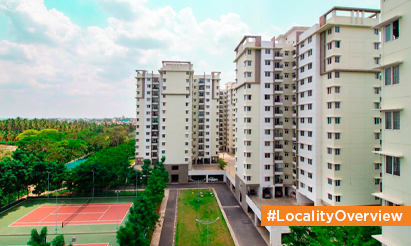What is Bhu Naksha (Land Maps) How to Download it ?
In the evolving landscape of land management and administration in India, the concept of Bhu Naksha, or land maps, has gained prominence. This article delves into the essence of Bhu Naksha, elucidating its significance in the Indian context, and provides a comprehensive guide for Indian readers on how to download these crucial documents.
Understanding Bhu Naksha: A Primer
1. What is Bhu Naksha?
1.1 Definition:
- Bhu Naksha, translated as land map, is a detailed map of land records, showcasing the boundaries and other relevant details of individual land parcels. It serves as a visual representation of cadastral maps, enabling authorities and landowners to better understand the geographical layout of land holdings.
1.2 Cadastral Maps:
- Cadastral maps are official records that delineate the boundaries and ownership details of land parcels within a particular jurisdiction. Bhu Naksha is essentially a digitized and accessible version of these maps, making them more user-friendly and transparent.
2. Significance of Bhu Naksha:
2.1 Transparency and Accessibility:
- Bhu Naksha promotes transparency in land records by providing a visual representation of cadastral data. This accessibility aids landowners, government authorities, and other stakeholders in understanding the precise details of land holdings.
2.2 Conflict Resolution:
- The visual clarity offered by Bhu Naksha can help in resolving land disputes and boundary-related conflicts. By referring to the digital map, discrepancies or encroachments can be identified and addressed more effectively.
2.3 Planning and Development:
- Government authorities utilize Bhu Naksha for urban planning, infrastructure development, and zoning purposes. The visual representation assists in making informed decisions regarding land use and development projects.
How to Download Bhu Naksha: A Step-by-Step Guide
1. State-specific Portals:
1.1 Identification:
- Each state in India may have its own online portal for land records and Bhu Naksha. Identify the specific portal associated with the state in which the land is located.
1.2 State Revenue Department Websites:
- The Revenue Department of each state typically manages land records. Visit the official website of the state’s Revenue Department to access the Bhu Naksha portal.
2. Locating the Bhu Naksha Section:
2.1 Navigation:
- Navigate through the portal to find the section dedicated to Bhu Naksha or land maps. This section is usually prominently displayed on the homepage or within the menu options.
2.2 Interactive Maps:
- Once in the Bhu Naksha section, you may encounter an interactive map interface. This interface allows users to zoom in, select specific areas, and retrieve detailed land maps.
3. Entering Land Details:
3.1 Parcel Identification:
- Enter the relevant details to identify the specific land parcel. This may include details such as the district, tehsil, village, and survey/plot number. Some portals may also allow searching by owner’s name or Khasra/Khatoni number.
3.2 Map Display:
- After entering the required details, the portal will display the corresponding Bhu Naksha. The map may include boundary lines, dimensions, and other details pertinent to the land parcel.
4. Downloading Bhu Naksha:
4.1 Download Options:
- Look for download options available on the portal. Most Bhu Naksha portals offer the option to download the map in commonly used formats such as PDF or JPEG.
4.2 Print and Save:
- Once downloaded, users can print the Bhu Naksha for physical records or save the digital copy for reference. This serves as a valuable document for landowners and facilitates easy sharing of information.
Ensuring Accuracy and Verification:
1. Cross-Checking Details:
1.1 Survey Numbers and Parcel Identifiers:
- Cross-check the Bhu Naksha details with the physical land records to ensure accuracy. Verify survey numbers, parcel identifiers, and other essential information.
1.2 Recent Updates:
- Land records are subject to updates, and it’s advisable to check for the most recent Bhu Naksha to account for any changes or corrections.
2. Seeking Professional Assistance:
2.1 Local Revenue Office:
- If there are discrepancies or uncertainties, consider seeking assistance from the local Revenue Office. They can provide clarification and ensure that the land records are accurate.
2.2 Legal Experts:
- In complex cases or legal matters, consulting with legal experts specializing in land issues can provide additional insights and guidance.
The advent of Bhu Naksha has marked a significant stride in the digitization and accessibility of land records in India. For Indian landowners, government authorities, and stakeholders, Bhu Naksha serves as a tool for transparency, conflict resolution, and informed decision-making.
Downloading Bhu Naksha is a straightforward process, facilitated by state-specific online portals. By following the step-by-step guide and ensuring accuracy through cross-checking and verification, landowners can harness the benefits of this digital tool.
As India progresses towards a more digitized and transparent land administration system, Bhu Naksha stands as a testament to the transformative power of technology in simplifying complex processes and empowering citizens with valuable information about their land holdings.




